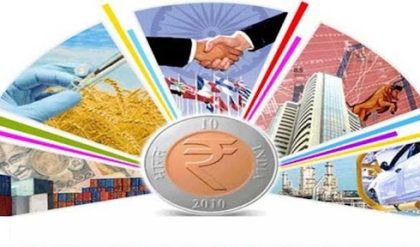· Indian System of Medicine (ISM) − The ISM integrates six systems of treatment under it. They are as follows −
- Ayurveda
- Yoga
- Siddha
- Unani
- Naturopathy
- Homeopathy

Other Facts
· Medical infrastructure in India is poorly developed; there is a lack of funds as well as will-power to invest in the research and development of medicines.
· Currently, there are about 7 lakh registered practitioners, 3167 ISM hospitals, and 26,000 dispensaries in India.
· The health status of a country normally is evaluated on the basis of some indicators such as −
- Maternal mortality rates
- Infant mortality rate
- Life expectancy
- Nutritional level
· In addition to these, current status of non-communicable and communicable diseases is also considered (to measure the health status).
· Indian government expends about 8.2% of the total GDP on health sector, which is very low in comparison to other countries.
· India has about 17% (population) of world’s total population, but unfortunately, it bears about 20% of global burden of diseases (GBD).
· GBD is an indicator that measures the number of people who are dying prematurely because of a particular disease. It also considers the number of years they spent in a state of ‘disability’ (owing to the disease).
· In India, maximum number of people die because of communicable diseases like malaria, diarrhoea, and tuberculosis.
· About 5 lakh children die because of water-borne diseases.
· 2.2 million children die because of poor supply of vaccines and malnutrition.
· Though about 70% of the Indian population lives in rural area, rural areas account to only one-fifth of the total hospitals (collectively private and public).

· There are only 0.36 hospitals per one lakh people, whereas urban areas have 3.6 hospitals per one lakh people. This figure is comparatively better, but even this is poor on an overall basis.
· 20% of the poorest people in India, spend about 12% of their income on healthcare, whereas the rich people spend merely 2% of their income on healthcare.
· There is a great disparity between women’s health and men’s health.
· Women suffer many health problems and because of lack of health care systems, most of them are left at god’s mercy.
· The discrimination between male child and female child is another big issue; this is the reason behind a very low sex ratio — 940 females /1000 males (2011 census), and 927 females/1000 males (2001 census).
· More than 50% of married women aged between 15 and 49 suffer from the problem of anaemia and other nutritional problems. Surprisingly, this is the reason for 19% of maternal deaths.
· Abortions (especially of girl child) are also a major cause of maternal deaths in India.
· As discussed above, health of people is the symbol of nation’s growth. In addition to this, a better health is the right of every person that need to be taken care of in a proper manner.
The Following Table illustrates Share of Commercial Energy Consumption (in %) −
| Sector | 1953-54 | 1970-71 | 1990-91 | 2012-13 |
| Household | 10 | 12 | 12 | 22 |
| Agriculture | 1 | 3 | 08 | 18 |
| Transport | 44 | 28 | 22 | 02 |
| Industry | 40 | 50 | 45 | 45 |
| Others | 05 | 07 | 13 | 13 |
The Following Table illustrates Public Health Infrastructure in India −
| Items | 1951 | 1981 | 2000 | 2013-14 |
| Hospital | 2,694 | 6,805 | 15,888 | 19,817 |
| Beds | 1,17,000 | 5,04,538 | 7,19,860 | 6,28,708 |
| Dispensaries | 6,600 | 16,745 | 23,065 | 24,392 |
| PHCs | 725 | 9,115 | 22,843 | 24,448 |
| Sub-centres | – | 84,735 | 1,37,311 | 1,51,684 |
The Following Table illustrates Health status of India in Comparison to Other Countries (2012) −
| Indicators | India | China | USA |
| Infant Mortality Rate/1,000 live births | 44 | 12 | 6 |
| Birth by Skilled Attendants (% of total) | 67 | 96 | 99 |
| Fully Immunised | 72 | 99 | 99 |
| Health Expenditure as % of GDP | 3.9 | 5.1 | 17.7 |
| Govt. Health Spending to total Govt. Spending (%) | 8.2 | 12.5 | 20.3 |
| Private Expenditure on Health (%) | 86 | 79 | 22 |





